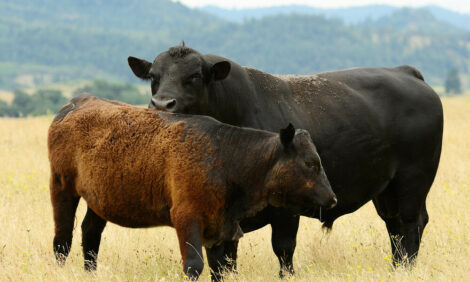



Cattle Dilemma: To Background or Not to Background?
US - An ever-growing set of online resources is available to beef producers gauging the prospects of running cattle between weaning and the feedlot.Understanding what price could be expected in the future and the associated cost of stockering (or backgrounding) a steer are vital components to making a sound economic decision.
As well as number crunching tools, there is growing confidence in the economics of native grasses for supporting backgrounding operations, University of Tennessee grasslands management expert Dr Pat Keyser has noted.
Two values are important - Value of Gain, a metric informed by futures and markets information, and Cost of Gain, an expectation of the cost per head and of liveweight produced, which can be compared online.
And with many US producers able to control costs with native grass, thought to cost around $0.31-0.37/pound of gain (22-24 pence), there are species worth considering, UoT research has found.
Agricultural Economist Professor Glynn Tonsor, Kansas State University, has recently recommended Beef-Basis.com to derive estimated margins.
For those with less operation-specific information, the Buy-Sell decision tool on AgManager.info is also worthwhile.
“Given the historically high value for cattle and the associated financial resources at stake, any marginal gain in information and associated improvements in decision making are inherently more valuable than in the past,” he wrote in a recent markets update.
Those looking at grazing stockers this spring are informed that strong weight gains of between 1.75 and 2.12 pounds per day can be achieved on weaned steers starting at weights of 590 pound (276 kilos), which can be as high as 2.7 pounds (1-1.2 kilos) early in the grazing season.
This is according to studies at the UoT Institute of Agriculture, which say higher-end results come from Indian Grass and Big Bluestem, with Switchgrass accounting for lower figures.
One crucial consideration is when to market, and as a general rule Dr Keyser advises that a margin is still there on native grass systems later in the year, even when prices typically decline and the reduced per unit prices of steers, often around 825 pound (374 kilos) in August.
“Economists at UTIA have evaluated the trade-off in holding these steers on native grass pastures versus marketing them after weaning in May,” said Dr Keyser.
“Because the rate of gain is high and the cost of grazing is low with natives, net returns are positive.”
He added that drought tolerance and perennial qualities are further positives to native grasses, ruling out Eastern gamagrass on grounds of low gain.
Michael Priestley
News Team - Editor
Mainly production and market stories on ruminants sector. Works closely with sustainability consultants at FAI Farms



